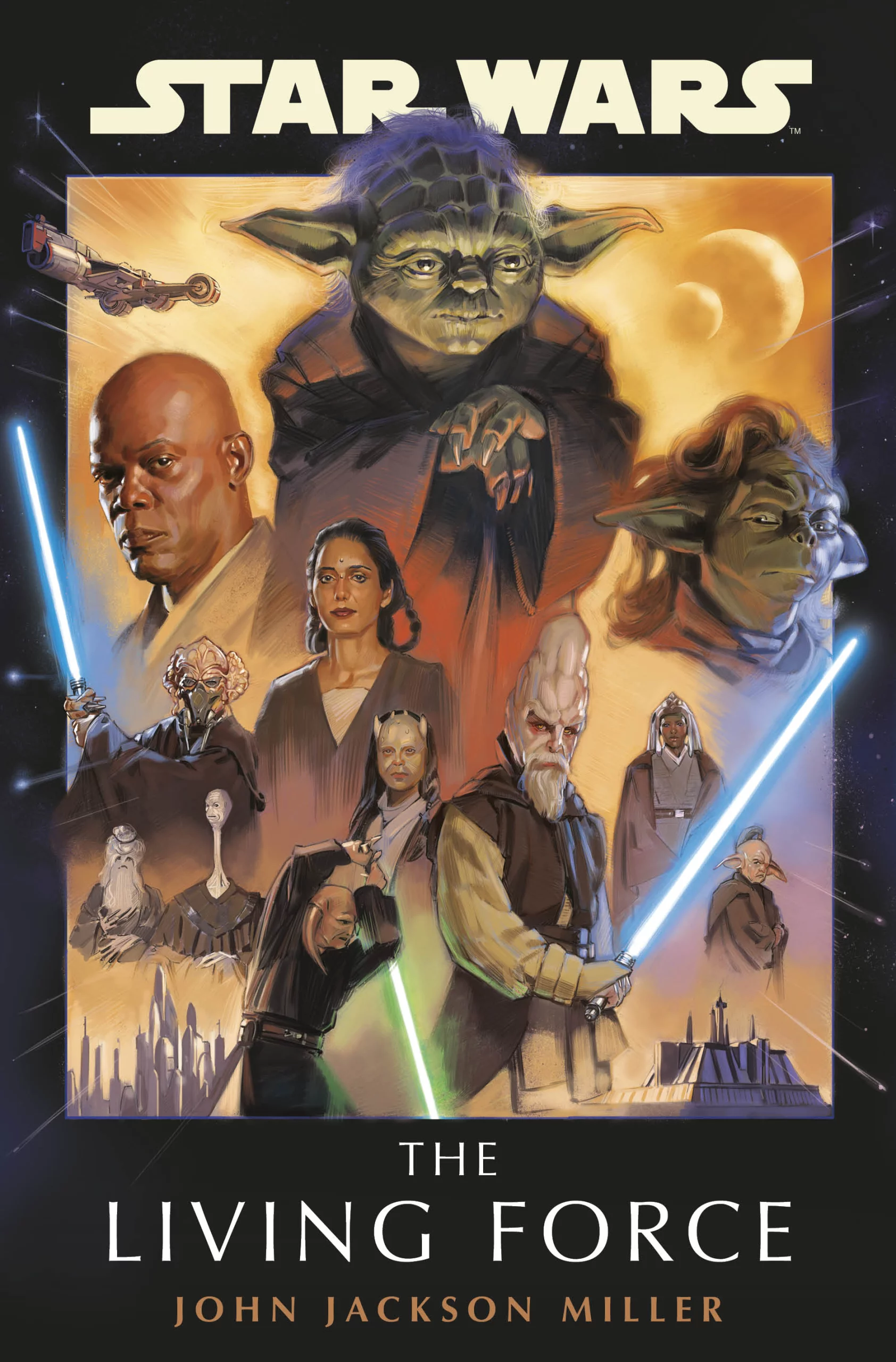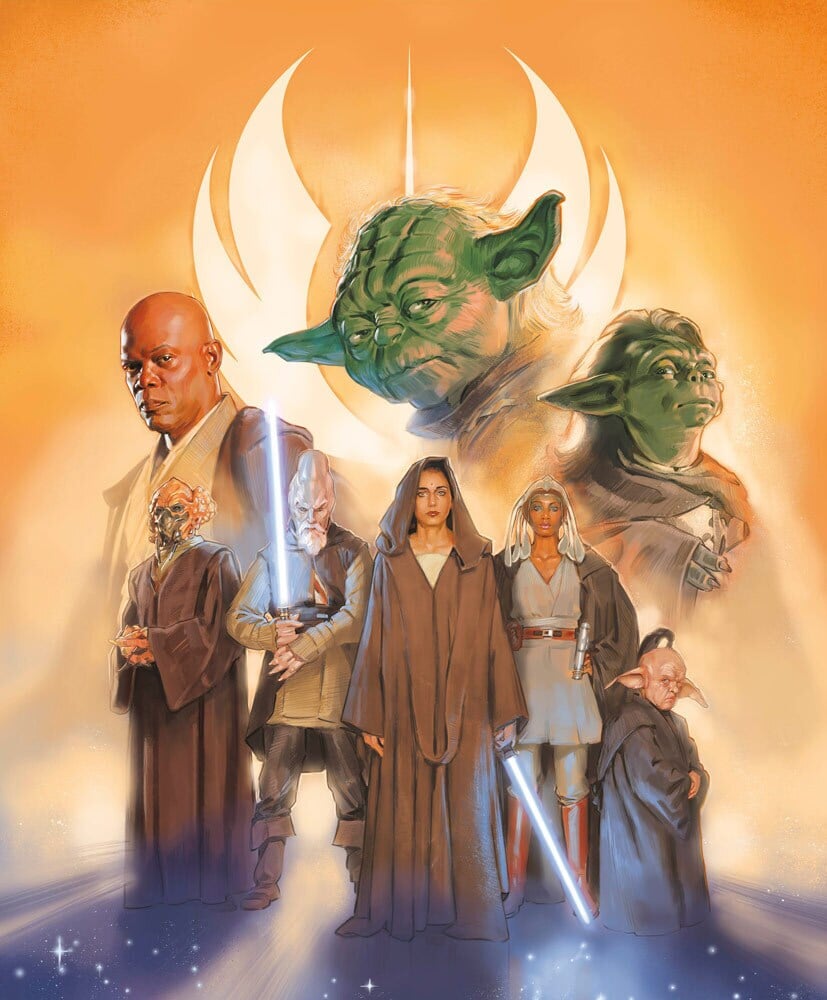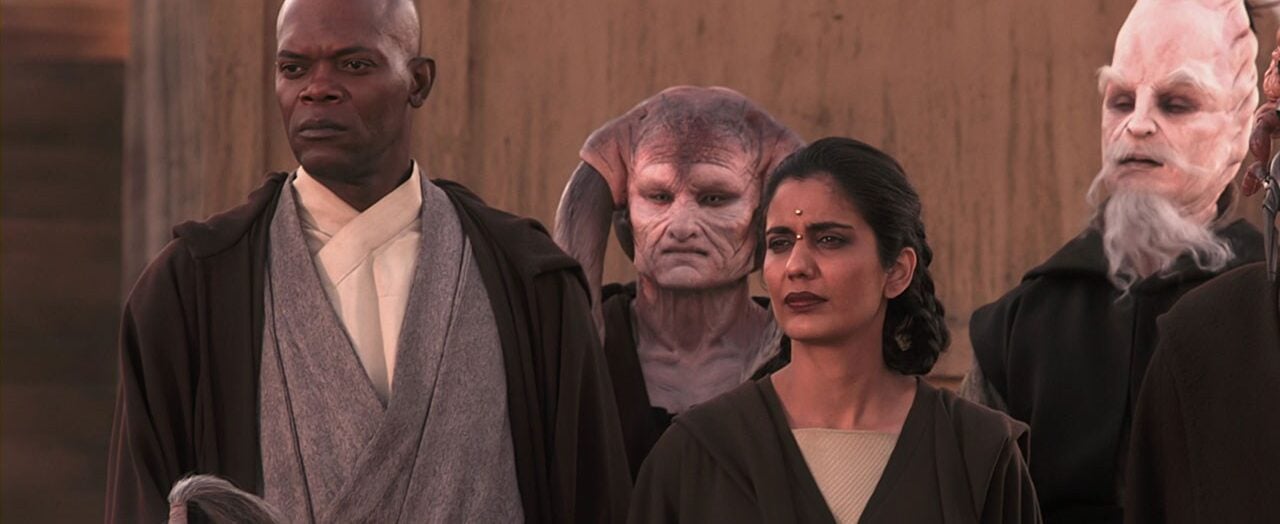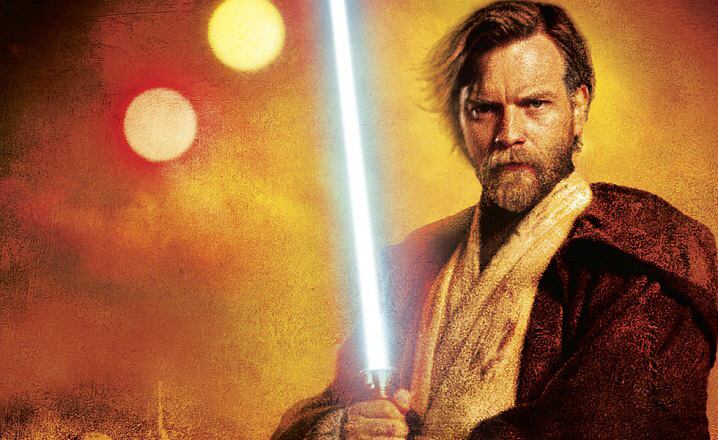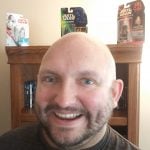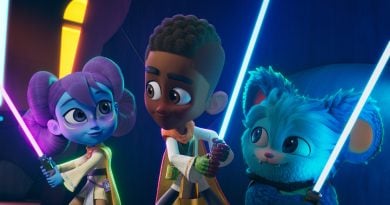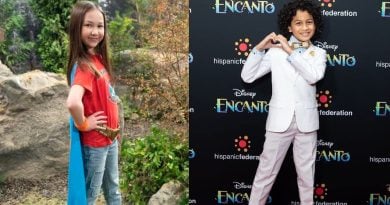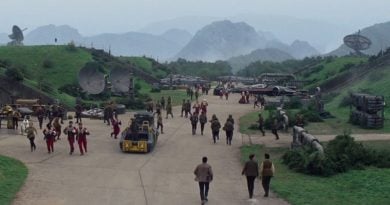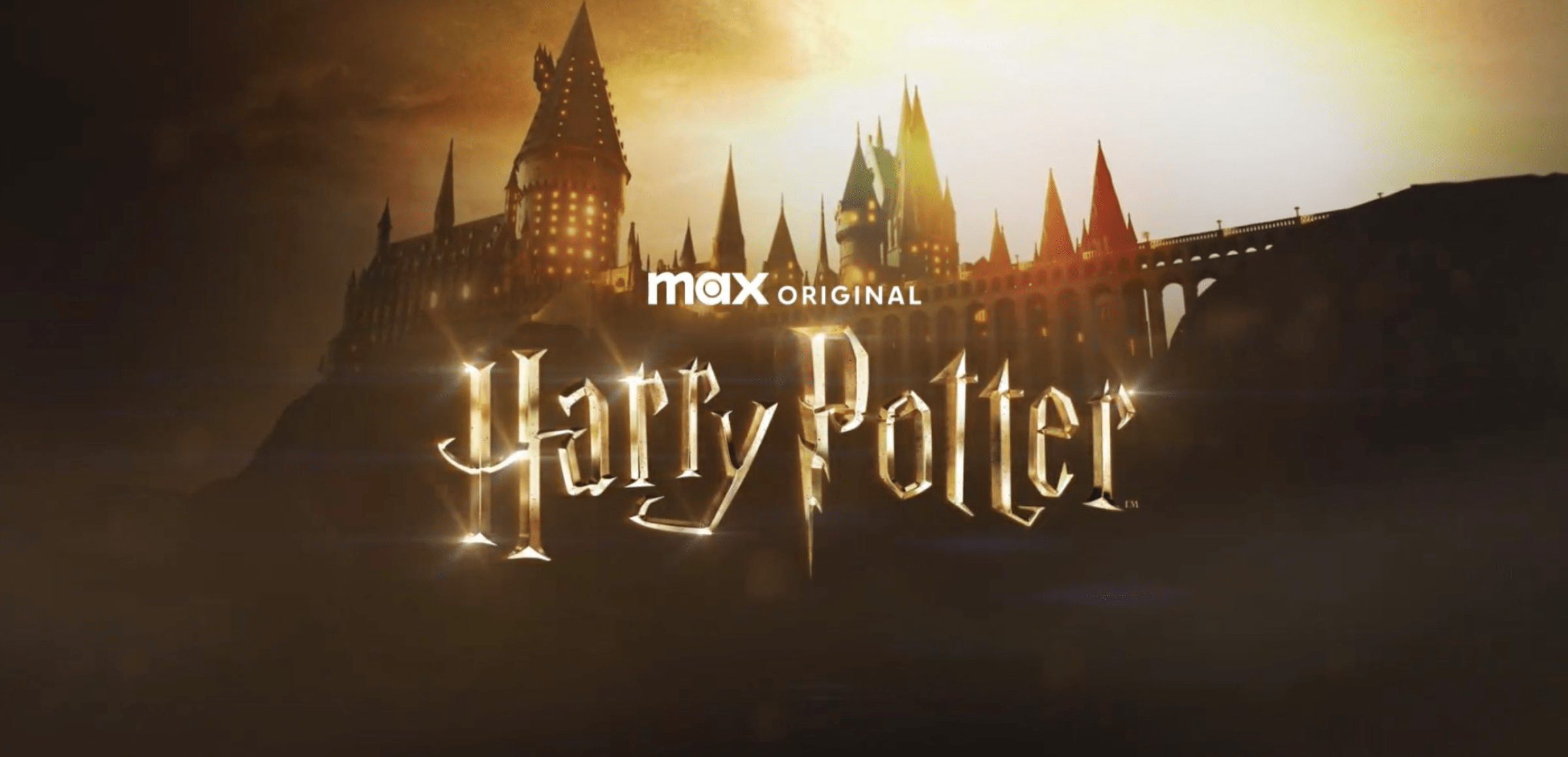SWNN Interview: John Jackson Miller on ‘The Living Force, His Career With ‘Star Wars’, and More
John Jackson Miller’s The Living Force has been out since early April. Hopefully you’ve read it because it’s time to dig deeper into the novel! Our Nate Manning had the chance to talk with Miller about how he brought his adventure with the Jedi Council to life. They also dug into Miller’s career and how Star Wars has affected it, and they look ahead to what’s next, including a side-step into the world of the Caped Crusader later this year.
If you haven’t read The Living Force, this interview doesn’t feature significant spoilers, but you are encouraged to check out either our non-spoiler or audiobook reviews. This is also an abridged version. The whole conversation will be linked after this written portion.
Q: Your last big Star Wars book was New Dawn back in 2014. So, after all this time and everything else you’ve written in between, why did you choose to write The Living Force?
A: Well, I was asked to write a book about the Jedi Council. And I had previously kept in Star Wars by doing short stories, and a novella for the Canto Bight book, and other comics for IDW. But mostly I had spent the last 10 years in other franchises- Star Trek, Battlestar Galactica, Halo.
But I was asked by my editor to come up with something about the Jedi Council for the 25th anniversary of The Phantom Menace. And I had the notion right away that I wanted Qui-Gon Jinn to challenge them over what is more or less the view that we have of them in that movie, which is they’re isolated in the top of the Jedi Temple and pontificating on great events and focusing on the future whereas Qui-Gon is much more concerned about the present and the people on the ground below.
Q: In fandom, there’s a lot of discussion about what types of Star Wars stories we need more of, be it Jedi stories, stories about the ‘war’ part of Star Wars, bounty hunters, and so on and so forth. So, did you aim to make The Living Force accessible to each of those different types of Star Wars fans?
A: Well, we had 12 main characters. Twelve members of the council plus we had Qui-Gon and Obi-Wan and beyond. I figured that there would be opportunities there to tell a bunch of different kinds of stories. We have light comedic sections, we have other ones which are weightier and deal with what the Jedi should be doing in terms of interacting with individual people. And we even have a section on the politics of this region of the galaxy which the Republic is sort of withdrawing from, sort of setting up what we see in The Phantom Menace. I even get a significant amount of material in here for the people that are into the Republic Navy, and the birth of that and how that comes about.
NM: The way I gasped when I read Pell Baylo. I read that name in the book, and I couldn’t place where that came from. I had to quickly stop reading the book and figure out where I know this name from, and it’s like, ‘Oh wow, I forgot that I even read that story back in the day!’
JJM: Yeah, that was the story I did in between New Dawn and now. Pell Baylo later on has a role with the early Imperial Navy, which springs out of this current role with the Republic Navy, and later on encounters Rae Sloane and Darth Vader. But that’s later. I figured he was the perfect person here to serve as a foil for Mace Windu because Mace is somebody who stands for the institution of the Jedi Council and the Jedi Order. Pell Baylo is just as sturdy a supporter of a Republic Navy that doesn’t even really exist yet. It gave me a chance to have two similar characters play off against one another.
Q: For many Star Wars fans, The Living Force was kind of, depending on how hardcore you are in the fandom, their first exposure to many of these Jedi Council members. How did you go about finding their personalities?
A: In some cases, there were actual appearances in the cartoons or somewhere. In some cases, there had been stories that had appeared but were Legends. I think for Yarael Poof we had only the Robot Chicken cartoon, and I decided obviously I can’t follow that. But this is an opportunity to make one of the members of the council much more impish. He’s been around for so long he’s just over everything, and he’s seen it all. He’s trying to entertain himself by being annoying. That’s where I went with him. Saesee Tiin, there’s very little about him other than he loved flying and he was a terrific pilot. And I said, ‘Okay, that’s going to be his deal. He’s going to be one of those guys that’s always in the garage and interacts with vehicles a lot more happily than with people.’ And that drove the dynamics of his interactions with everybody else. I didn’t have a lot about, for example, Adi Gallia, but I knew that she was one of the younger members of the Council, and I thought this could be a case where somebody who really respects Yoda is working more or less as his assistant. It’s not an equal situation. And that can be a place where I can introduce a little bit of conflict, too.
Q: Going off of that, you mentioned that there are 12 main characters in the book, which meant a whole lot of POV sections. It’s a very complex web that you’re weaving. You pared it down very well, so can you go into detail on how you found those pairings that made the book a little bit easier to write?
A: I’ve done a number of novels in more recent years that required some air traffic control. I just did a novel, Star Trek Discovery: The High Country, where I’ve got various members of the Enterprise crew trapped on a planet, and I hop between them. I ended up putting that into a spreadsheet, so I’ve got the A-story with Captain Pike, and then I will alternate with the B-story with the other character, the C-story with the other character, the D-story with the villain, and I’ll come back repeatedly to the main throughline, and that’s kind of what I did here.
I figured I’ve got 12 Jedi Masters, 10 of which are off on the planet Kwenn, and I break it down basically into seven groupings, three pairs, and four people who were solo at the beginning. But they would end up interacting, and later we would get sections with 3 and 4. In the meantime, the throughline story is Depa Billaba’s plus Mace Windu and the villain. And that’s all going off in space, so there should be a pretty natural rhythm to this book. We’re never away from either story for a while unless it’s a situation where I want you to be away from a story for a while.
Q: You just mentioned the main throughline of the book… Depa and her conflict with the Riftwalkers. What was it about her character that led to her being chosen for the lead role in The Living Force?
A: I had written her in New Dawn as Kanan’s master and thought, ‘This is an earlier time before she has him as a Padawan. Maybe I can get some drama out of her not having had a Padawan for a while.’ She had a student that was not her Padawan but somebody that she taught that has gone missing in action, and been a victim of what’s happening out here in this pirate-ridden space. I thought I’ll have her interact with a younger character and get her on a journey to where she’s much more likely to take a student.
Q: With all the Jedi characters in the book, many see them as the most important factor in the book. But there’s also the flip side with characters like Kylah, Zilastra, the people of Kwenn, all those people that one could argue are potentially more important to making the overall book work. Can you speak to their value to The Living Force?
A: That is kind of the way we do it. The Kenobi novel that I wrote over 10 years ago is mostly told through the point of view of everybody else. We get to see some changes in Obi-Wan’s life, but it’s more about the changes that he is able to create as a catalyst in their lives. And we had multiple examples of that in this particular book because we had so many people that the Jedi were interacting with. And I wanted to have- you mentioned Kylah and Zilastra- the two of them are kind of there to suggest to Depa what her life would’ve been like if she hadn’t been found and brought in from this region to the Jedi. She sees that clearly if she doesn’t stop Kylah from the path that she’s on, she could become Zilastra fairly easily.
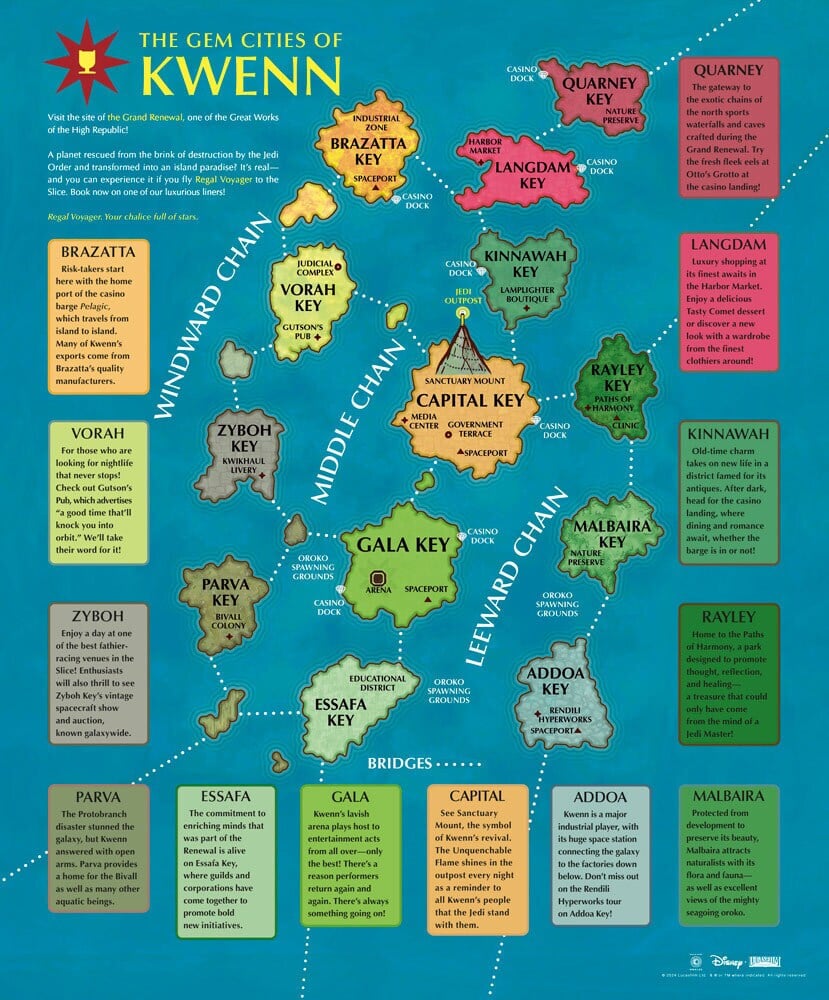
Q: I loved their storyline throughout this book. It was really fun to watch play out. But three other characters that I had even more fun spending time with were Wungo, The Lobber, and Ghor. What’s the inspiration behind those “three stooges,” if you want to call them that?
A: That’s a good way to describe them. They actually weren’t in the outline. I said Obi-Wan and Qui-Gon will deal with some crisis at the beginning and they’ll do it quickly because the point is not the crisis, the point is how other people on the ship are going to react to them afterward. And I said to myself, ‘You know this is an opportunity.’ I had wanted to use Qui-Gon and Obi-Wan throughout the book at various moments, and I said, ‘Okay, these guys can be a throughline to this.’ People have joked about Tag and Bink based on Rosencrantz and Guildenstern. These are the guys who just seem to survive and be in the background, and I realized, ‘Gosh, I can not only have them show up in Qui-Gon and Obi-Wan’s parts but also in Zilastra’s part and Depa’s.’ And I thought this gives Qui-Gon and Obi-Wan a chance to help somebody themselves. The whole thing about all this is Obi-Wan, as we see him saying in Phantom Menace, ‘Why do we keep picking up these useless life forms?’ And it’s Qui-Gon’s view that maybe they’ll come in handy and be useful, and it’s just the right thing to do, and let’s see what happens. And that is the two of them putting that into motion here.
Q: Beyond The Living Force, the book’s been out a while, and you’ve always been in and around Star Wars, writing books like Kenobi and various short stories. What has writing for Star Wars meant for your career?
A: Obviously quite a lot. My most famous comics work is Knights of the Old Republic, my most famous novel is almost certainly Kenobi. It’s something where it has allowed me to interact with fans and have a following there. But also, just getting to work in this universe has given me so many different story opportunities, and no two of these stories have really been alike. There are similar elements to them. The theme of the Jedi alone or the Jedi cut off from the Jedi Council, that runs through a lot of them. But there’s very different kinds of stories in each one of these. So, I think it says something good about Star Wars that it is a milieu and a franchise that is open to different kinds of stories.
Q: Looking back, whether it’s Star Wars or non-Star Wars because you’ve written all kinds of other fun stories as well, what’s one thing that you wish you could go back in time and tell yourself before getting involved in all this?
A: Before every novel, I always say to myself, ‘Boy, I wish I had known I was doing this particular book when I scheduled all these conventions!’ Because that’s happening a lot. But that’s just part of the game. I was probably not prepared for how long a novel takes, how long it takes to actually be in a room with the computer and nothing else. And it’s one of those things where there’s an additional part of the process here because I’m working in franchise fiction, so even before I get to actually write any of a manuscript, there have been weeks and weeks of working on the outline. This is different from the day job I used to have, which was in an office with a lot of other people working. There’s just a lot of solitude with this sort of thing. This is the first novel in many years that I wrote in the summer. And that’s really hard to do because there’s just so much other stuff to do. I try to get these things into the winter if I can.
Q: Where in the Star Wars timeline would you want to explore next, especially as it’s expanding further beyond the movies?
A: You know, I am on call to go wherever I’m sent, and I usually find something of interest in whatever part of the timeline I’m in. I have yet to do a whole lot in the original trilogy era. You know, Kenobi is right after Episode III. I haven’t written Han or Lando or Chewbacca or anybody like that. I’ve only done one story, one comic story, with Luke and Leia and the droids. So something with everybody in that part of the timeline, that could be interesting. But otherwise anything that both fits my schedule and that makes sense is something new I’m interested in.
Q: I’m sure you’d also be interested in bringing in some of your Expanded Universe characters. Are there any in particular that you would like to bring into canon and tell their stories?
A: Well, there are references to those stories all over the place in these books. Saesee Tiin is remarking about a multi-winged spaceship, a lotus-looking ship with way too many wings. Well, that’s from Knight Errant: Deluge, which I did back in the day. You have Depa telling a story about a young woman Jedi who’s cut off from everything and has to try to find a way to go on. That’s also Knight Errant. The creature, the oroko, that Oppo Rancisis encounters in this book. Well, the oroko is the name of a whale-like ship that I had back in Knights of the Old Republic. We just never said what it was named for. And so I have these ties here and there and everywhere else. I do believe that there are ways to do certain things.
The Knights of the Old Republic comic storyline with Zayne Carrick could just as easily be set in or around, or before the Clone Wars. It’s something where, as long as you’ve got a lot of Jedi and no Sith working out in the open, that is something that more or less can lift out and move. The main thing with that is we had the Mandalorian Wars in the background. You’d want to do something else instead of that. We’ll see what happens. All these things are sort of evolving.
Q: Exciting times are ahead for Star Wars, that’s for sure. So, wrapping things up with a hard right turn, but not super hard right. You have a Batman novel coming out later this year, Batman: Resurrection. Is there anything you can tease or tell us about that book at all?
A: Not a whole lot other than that it is the first novel that ties in with the Tim Burton Batman movies, Batman and Batman Returns. It is set in between the two. So basically, characters from the first movie, like Alexander Knox and Vicki Vale, are eligible to appear, and also characters that we see in Batman Returns, like Max Shreck, who is still walking around, has this middle section here. I said it was a dream project that I never was able to even dream about doing because I never thought for a minute, even though I saw that movie in the theater 12 times in ’89/’90. I had no idea that there could even be such a thing as fiction that ties into a particular movie or particular iteration of Batman. The book is done. I had a blast writing it. My editor really enjoyed it, and I am really looking forward to people getting to see it. That comes out October 15th in hardcover, audiobook, and ebook.

For more upcoming works from Miller, look for June 11’s Star Wars Legends: The Rebellion Volume 2 omnibus, which includes Miller’s first Dark Horse issue, 2005’s Empire #35. Also, grab the new reprint of the Knights of the Old Republic Volume 1 epic collection. That appears to be available digitally, with paperbacks dropping on June 18. Batman: Resurrection is also available for pre-order now.
To find out who else may be making an appearance in that novel, hear a fun story about Miller’s experience with The Phantom Menace, and more, check out the entire conversation below:
Star Wars: The Living Force is available now in all formats. Thank you to John Jackson Miller for taking the time to chat with us!
Nate uses his love for Star Wars and movies in general as a way to cope with the pain of being a Minnesota sports fan. When he's not at the theater, you can usually find Nate reading a comic, listening to an audiobook, or playing a Mario video game for the 1,000th time.
Eric has been a fan of Star Wars ever since the age of five (or so) when his parents sat him down in front of a TV with pizza and a Sprite and showed him the original trilogy. He keeps trying to convince more fans to read the amazing 1980s Star Wars newspaper comics by Archie Goodwin and Al Williamson. When he's not reading, watching or playing Star Wars media, he's often enjoying other great fantasy and science fiction sagas or playing roleplaying games with his friends.


